BBQ pork disasters can be a frustrating issue for new and experienced backyard cooks. This guide explains why they occur and how to troubleshoot smoked pulled pork for tender, juicy results!
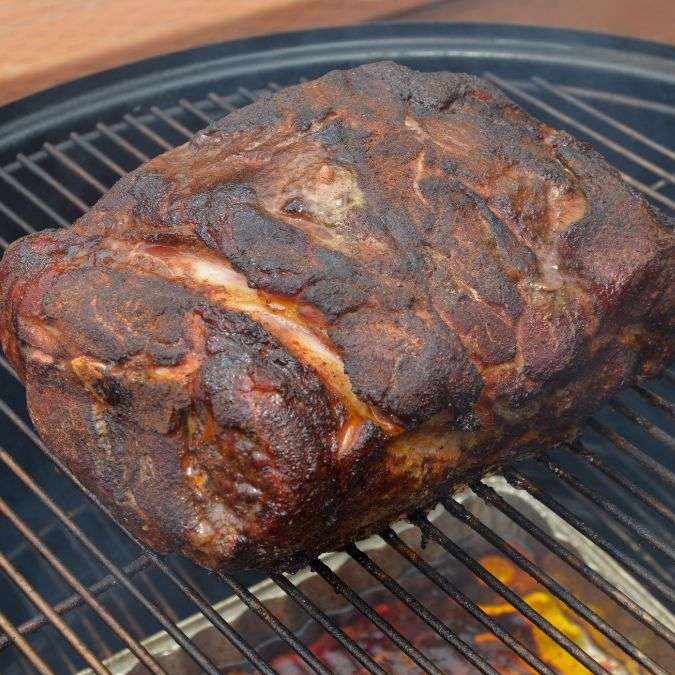
derrickriches.com
Common Causes of Dry Pulled Pork
We’ve all been there, excited to smoke a delicious pork shoulder, only to have it come out tough and hard to shred. This issue is more common than you might think, and there are several reasons why it occurs. Before you throw in the towel, understand that even the most experienced backyard cooks can encounter some difficulties.
A poor-quality roast, unfavorable climate, temperamental cooking equipment, or improper timing can result in tough, dry pulled pork.
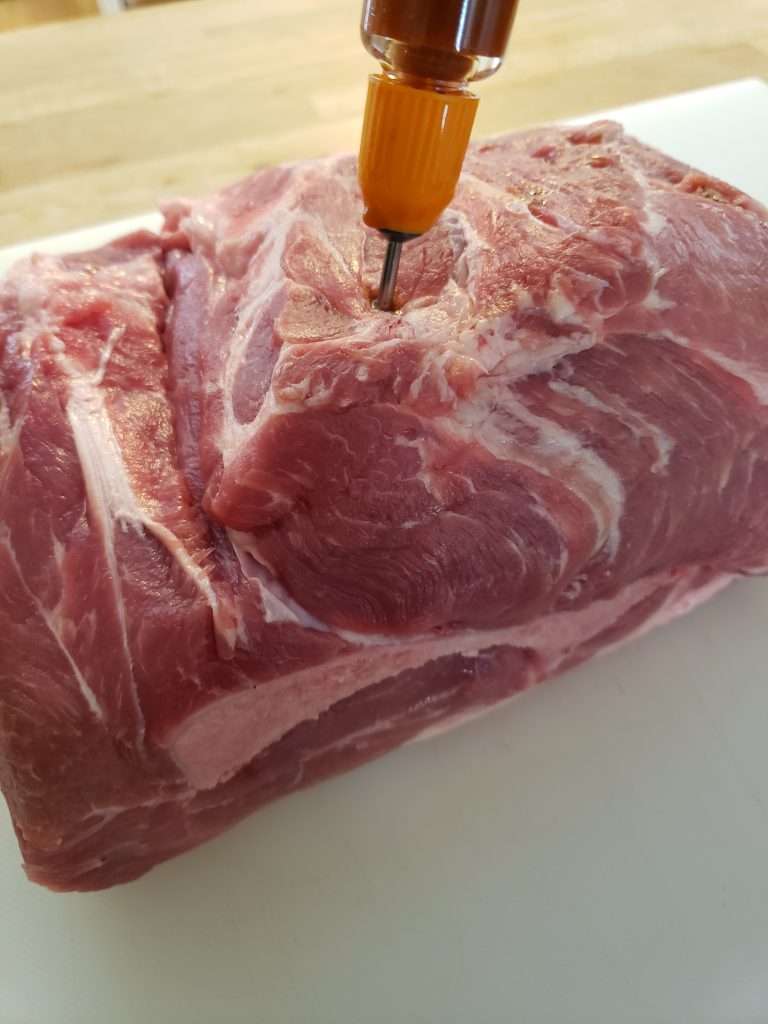
Starting with pork injection marinade is one of the best ways to prevent the need for troubleshooting smoked pulled pork. Doing this will infuse the meat with moisture from the beginning.
Undercooking
While it seems counterintuitive, undercooked pulled pork can be tough and dry. Keep in mind that pork shoulders and butts are inherently tough cuts of meat to begin with. The collagen and connective tissues require sufficient time to break down, which promotes moisture and tenderness. If you pull it off the smoker too early, the tissues will not have a chance to soften.
- Solution: Cook the pork roast to an internal temperature of 195°F or 205°F.
- Probe tenderness – The most important indicator is that the probe will slide into the meat as if it were going into warm butter, with very little resistance. Make sure to check multiple spots.
Overcooking Pulled Pork
Although less common than undercooking, it can occur if the meat is cooked too far beyond the ideal temperature. At very high temperatures, the muscle fibers can begin to contract and release moisture.
- Solution: Stick to the 195-205°F range and prioritize probe tenderness. If it’s extremely mushy and dry, it is severely overcooked.
Not Resting the Meat Properly
Resting is a crucial step that can often be overlooked. After cooking, the meat’s internal temperature will continue to climb (carryover heat), and the juices redistribute throughout the muscle fibers. If you shred it immediately, you’ll notice resistance in the meat, and all those flavorful juices will escape, leaving you with dry pulled pork.
- Solution: Leave the smoked pork wrapped (or in a disposable aluminum pan covered with foil) for 1-2 hours, and preferably longer (up to 4 hours) in an insulated cooler.
Cooking Too Hot, Too Fast, or Inconsistent Temperatures
Low and slow is the key to achieving perfect pulled pork. Cooking the roast over high heat can result in a tough exterior and dry interior. Inconsistent temperatures in your smoker can also lead to uneven cooking, with some parts cooking through while others are still undercooked.
- Solution: Maintain a consistent smoker temperature, typically between 225°F and 275°F.
- Use a reliable meat thermometer or temperature probe to monitor both the smoker’s temperature as well as the internal temperature of the meat.
- Leave the lid closed: Avoid opening the smoker lid too much, as this can cause temperature fluctuations.
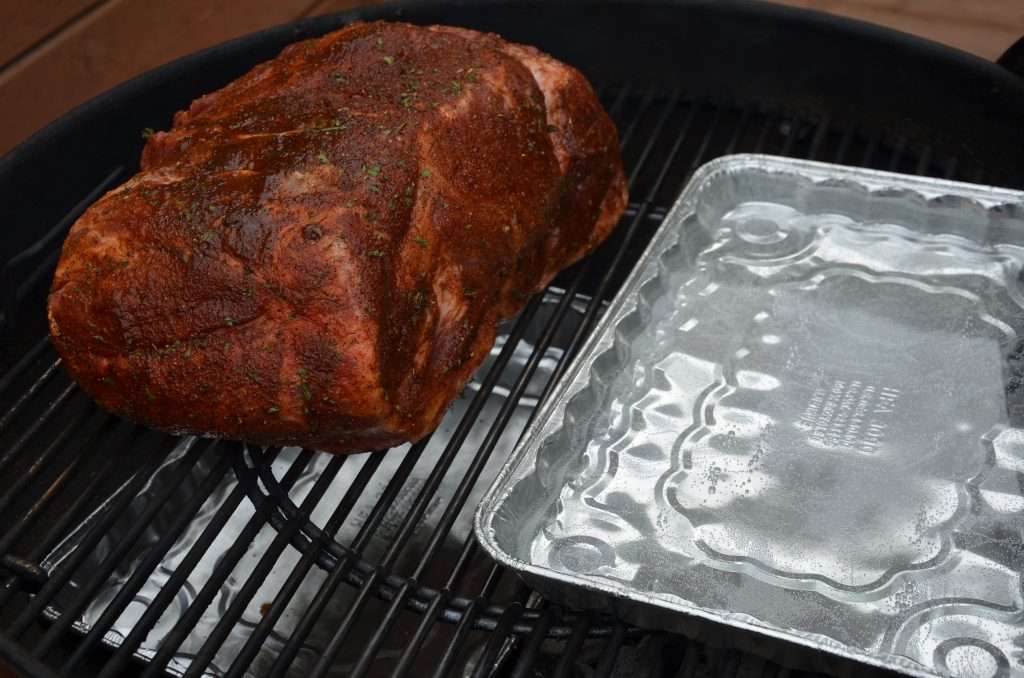
derrickriches.com
Lack of Moisture in the Cooking Environment
Although charcoal and pellet grills can maintain decent humidity levels, sometimes, the cooking chamber can radiate dry heat.
- Solution: Water Pan – Place a water pan inside your grill, especially during longer cooking sessions. This will add humidity to the cooking chamber, helping the meat stay moist and tender. You can add about 2-3 cups of water, chicken broth, watered-down apple juice, or even a light beer.
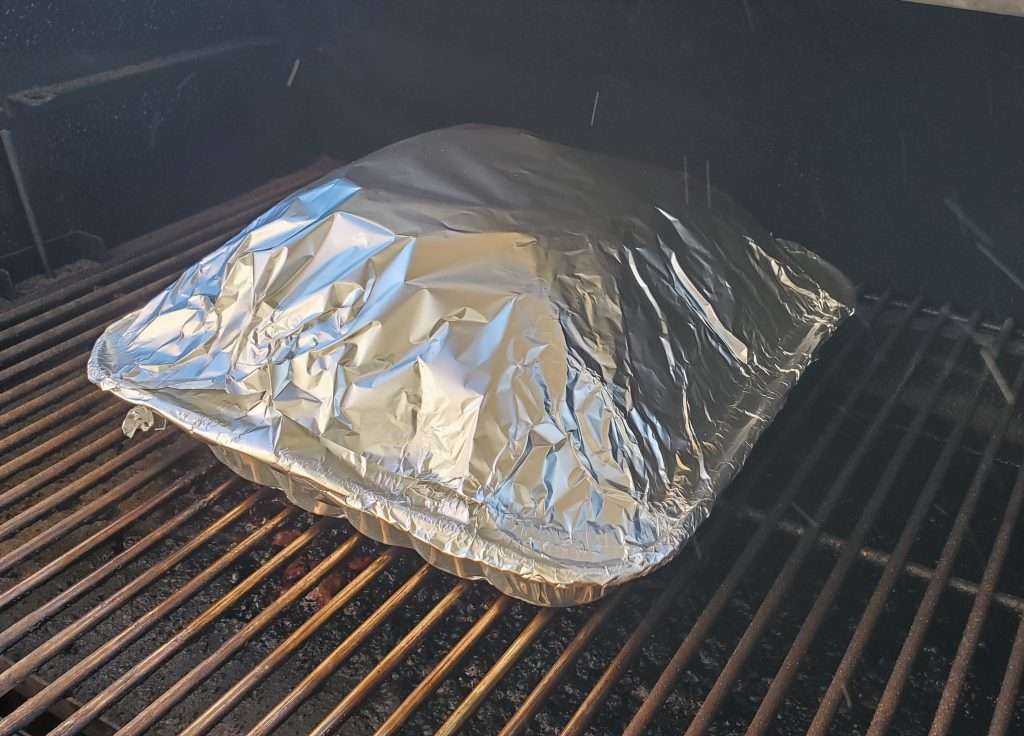
derrickriches.com
Not Wrapping, Wrapping Too Late, or Incorrectly)
Wrapping the pork butt in foil during the temperature “stall” helps to push it through this phase. It also helps the pork retain moisture and creates a tender roast.
- Solution: Wrap the pork butt when it reaches the stall (an internal temperature of 160°F) and after the bark has set. Add a little apple juice, cider vinegar, or broth to the foil before sealing the roast.
Too Lean of a Pork Cut
While this is less common, a very lean pork cut that is devoid of intramuscular fat can contribute to dryness. This is because it lacks the necessary fat and connective tissue required to render it tender and succulent.
- Solution: Select a well-marbled bone-in pork roast (such as a Boston butt or pork shoulder) for optimal results. The ideal pork butt should have a rich, pinkish-red color with streaks of white fat running throughout.
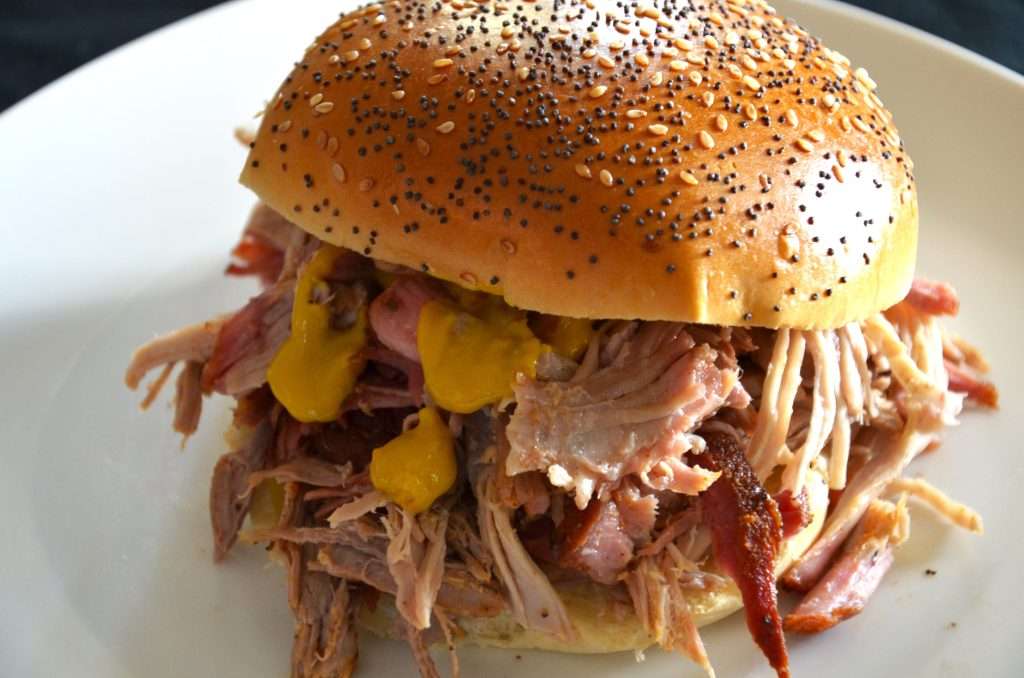
derrickriches.com
How to Troubleshoot and Fix Dry Pulled Pork
If you’ve already pulled the pork and it’s dry, don’t despair. You can salvage it!
- Add Back Juices: The absolute best way to re-moisten dry pulled pork is to use the pan drippings. After you rest the pork, separate the fat from the pan juices and pour the flavorful liquid back over the shredded pork.
- Add Broth or Stock: If you don’t have enough pan juices, add warmed chicken or pork broth to stretch it.
- BBQ Sauce: This is a popular and effective method. Mix in your favorite BBQ sauce. A Piedmont-style vinegar sauce will add a nice tang to the pork.
- Apple Juice and Butter: A simple drizzle of warmed apple juice mixed with butter can help hydrate the pork and add a subtle, sweet flavor.
- Reheat Gently: Rewarm pulled pork in a slow cooker with added liquid on low heat.
- Repurpose it: If all else fails, you can always use the pulled pork to make a stew, chili, or a hearty soup. The extra liquid will help rehydrate the meat.
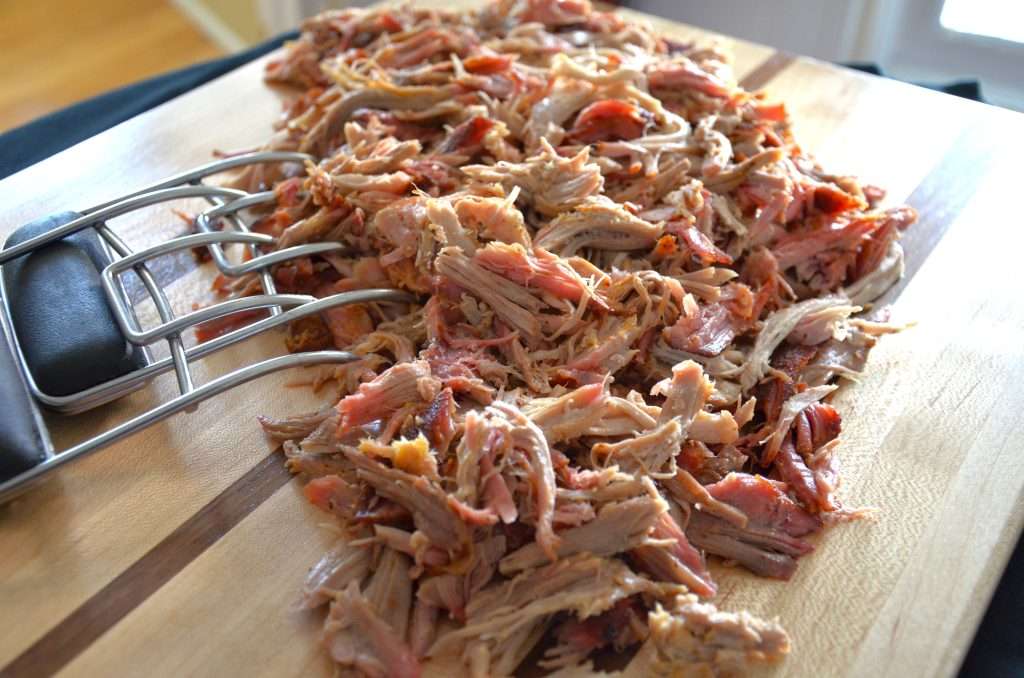
derrickriches.com
FAQs – Troubleshooting Smoked Pulled Pork
1. What cut of meat is best for smoked pulled pork?
The most popular cut is pork shoulder, specifically the Boston butt (upper part of the shoulder). It has excellent marbling and connective tissue that breaks down during low and slow smoking.
2. How long does it take to smoke pulled pork?
Smoking time varies based on size and temperature. At 225°F, plan for 1 to 1 1/2 hours per pound of meat. A 6-pound Boston butt can take 6-9 hours. Remember to cook to an internal temperature rather than a specific time.
3. What internal temperature should pulled pork reach?
Pulled pork is typically cooked to an internal temperature of 195°F to 205°F, allowing the collagen to break down completely for easy shredding.
4. Should I wrap my pork butt while smoking?
Many pitmasters use the “Texas Crutch,” which involves wrapping the meat in foil to maintain an internal temperature of 160°F to 170°F, helping it break through the stall and retain moisture. Keep in mind that foil is a better choice for pulled pork, whereas pink butcher paper is more suited for wrapping smoked brisket.
5. What is the stall?
The stall happens when internal temperature plateaus (often around 160°F-170°F) as moisture evaporates from the meat. Wrapping helps push through this phase more quickly.
6. Do I need to inject the pork?
An injection marinade will add moisture and flavor deep inside the meat, but it’s optional. A good pulled pork rub and proper smoking technique are usually sufficient.
7. How much wood should I use for smoking pulled pork?
You want steady, clean smoke. Maple, apple, cherry, and pecan are excellent choices. Keep in mind that robust woods like hickory and mesquite can create bitter, overly smoky flavors.
8. How do I keep pulled pork moist as it cooks?
Use a water pan in your smoker or pellet grill, wrap the meat during the stall, rest it properly after cooking, and mix the pulled pork with its juices after shredding.
9. How long should I rest pulled pork after smoking?
Rest for 1-2 hours, wrapped in foil and covered with clean kitchen towels, then stored in a cooler. This helps redistribute juices and makes shredding easier.
10. Can I make smoked pulled pork ahead of time?
Yes. Pulled pork reheats well. Store in an airtight container with its juices, and reheat gently (in the oven, sous vide, or crockpot) to prevent drying out.
11. What sauces go best with smoked pulled pork?
Several types of BBQ sauces complement smoked pulled pork. Here are some options to consider:
12. How much pulled pork do I need per person?
Plan for 1/3 to 1/2 pounds of cooked pulled pork per person. An 8-pound Boston butt, once cooked, will yield roughly 4-5 pounds of meat.
13. Can I freeze smoked pulled pork?
Yes. Cool completely, vacuum-seal or tightly wrap, and freeze for up to 3 months. Thaw in the fridge and reheat in a slow cooker.
14. What are good side dishes for smoked pulled pork?
15. Why is my pulled pork dry?
Common causes include overcooking, excessive trimming of fat, insufficient resting time, or improper reheating.
Remember that troubleshooting smoked pulled pork is an opportunity to hone your outdoor cooking skills. Focus on selecting the right meat cut, controlling the temperature, and using proper resting techniques for best results. Each attempt will bring improvement. Happy smoking!
The post Troubleshooting Smoked Pulled Pork appeared first on BBQ & Grilling with Derrick Riches.
Did you miss our previous article...
https://manstuffnews.com/backyard-grilling/how-to-cure-and-smoke-your-own-bacon
 Backyard GrillingWeekend WarriorsAdvice from DadBeard GroomingTV Shows for Guys4x4 Off-Road CarsMens FashionSports NewsAncient Archeology World NewsPrivacy PolicyTerms And Conditions
Backyard GrillingWeekend WarriorsAdvice from DadBeard GroomingTV Shows for Guys4x4 Off-Road CarsMens FashionSports NewsAncient Archeology World NewsPrivacy PolicyTerms And Conditions
